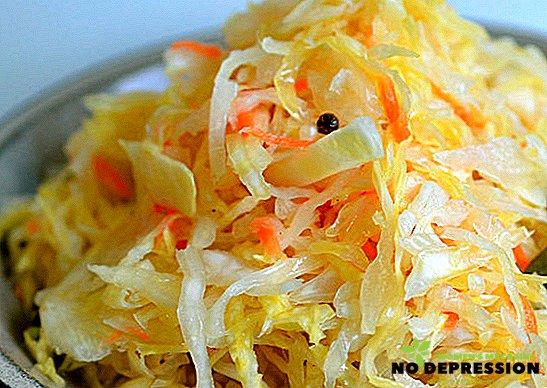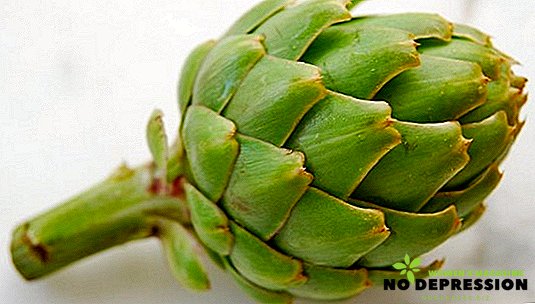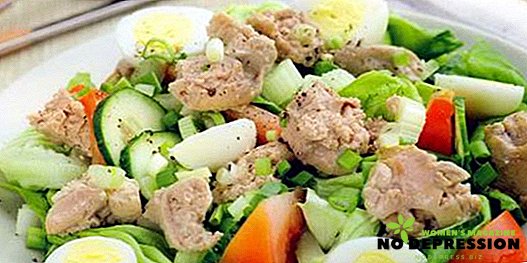Sauerkraut is a real fount of healthy microelements: it helps fight the flu, withstands colds. And thanks to the amazing taste it can complement any dish.

The benefits of salad
In winter, it is sauerkraut that is the most accessible source of beneficial trace elements and vitamins. Despite the low calorie content (only 20 kcal per 100 grams), a small amount of cabbage can provide the body with a daily rate of vitamins.
And due to the fact that it is a product of natural fermentation, there are a lot of lactic bacteria in it that help to improve the workings of the gastrointestinal tract.
This product contains the following vitamins:
- C. Sauerkraut can easily replace oranges and other citrus fruits, thereby reducing the risk of a cold.
- U, which is required for the stomach. Improves the condition with ulcers or gastritis, though not with the exacerbation of the disease.
- AT 6. With it, it is easier to digest fatty foods, improves the work of the digestive tract.
- K. Will help strengthen bones, improve liver function, accelerate wound healing.
- P helps improve blood circulation.
Also in the composition there is fiber, which reduces cholesterol; lactic acid bacteria that help fight dysbacteriosis. Sauerkraut is rich in iron, potassium, zinc, iodine, and the consumption of the disease has a healing effect.
Recipes for sauerkraut for the winter
Classic dry
Cooking time: 60 minutes (+4 days).
Calories per 100 g: 27 kcal.
To prepare the necessary ingredients:
- 4 kg of cabbage;
- 400 g carrots;
- 80 g of sugar and salt.
The preparation is as follows:
- Cabbage needs to be washed, remove the top leaves from it.
- Slice into small strips.
- Peel the carrot, grate.
- Mix cabbage with salt, squeeze it carefully - juice should stand out.
- Combine with sugar and carrots, mix thoroughly.
- Fill the pot or jar with a mixture (capacity from 3 liters).
Putting the mixture, you need to tamp it with your hands. Place the filled container in the basin, as a large amount of juice will begin to stand out in a few days. Cabbage needs to be covered with gauze, put a load on top, for example a stone. Leave in the room for 3-4 days, and twice a day you need to remove the foam, wash the gauze, stir the mass.
After that, you need to put the banks in a cooler place for 4 days. Then it will remain to shift the snack to more convenient banks, but it can be stored in the containers where it was prepared. Store in the refrigerator or basement. Before serving, you need to put the cabbage in a plate, pour vegetable oil.
Spicy with beets and horseradish
Cooking time: 90 minutes (+4 days).
Caloric content per 100 g: 21 kcal.
For cooking you need:
- 4 kg of cabbage:
- 400 g of beets;
- 2 heads of garlic;
- 30 grams of grated horseradish;
- 70 g of sugar and salt;
- 1 liter of water.
The preparation is as follows:
- Peel the raw beets, rinse, chop or grate.
- Garlic finely crumble or pass through the press.
- Horseradish clean and grate.
- Wash cabbage, finely chop.
- Boil water, add salt and sugar, mix to dissolve everything.
- Put cabbage into a container, and place the pot itself in a large bowl.
- Crumble cabbage - it should be very tight.
- Fill containers with cooked brine.
- Put the load on top, if the size of the jars allows.
- Remove the load several times a day and pierce the mass in several places with a long fork - this is how the resulting gas will flow out of the container.
- After a week, arrange the snack in separate jars and put them in the cold.

Recipe for sweet sauerkraut in cans
Cooking time: 60 minutes (+4 days).
Caloric content per 100 g: 25 kcal.
Will need such products for cooking:
- 5 kg of cabbage:
- 90 g of salt;
- 70 ml of honey;
- 5 bay leaves.
First you need to chop the cabbage (the smaller, the better), then mix it with salt, mash carefully to highlight the juice. In parallel, melt the honey by mixing it with 100 ml of water. Pour the mixture with the prepared solution, mix thoroughly all over.
Separately sterilize the banks, put a few bay leaves on the bottom.
Leave the jars in the room at room temperature for 2-3 days, twice a day, you need to pierce the mixture with a fork. After a time, drain almost all the juice: leave a little liquid, so that it is enough to cover the mass.
In a large container, put a piece of cloth, put the jars on top, and fill the pot with water so that the liquid covers the jars half. Send on low heat and sterilize for about half an hour. It remains to remove the banks, roll up, turn them upside down and cover them with a warm blanket until they cool down.
The appetizer prepared according to this recipe can be stored even at room temperature.

Delicious and nourishing stewed cabbage
Cooking time: 45 minutes.
Caloric content per 100 g: 76 kcal.
Prepare the main ingredient - sauerkraut, and also think about other ingredients:
- for the preparation of lean option you need to take onions, carrots, fruits or dried mushrooms;
- if you want a more satisfying option, you need to use meat, sausages, bacon bits.
We will consider the recipe with meat. To make it you need the following ingredients:
- 2 onions;
- 1 carrot;
- 20 g of black bread;
- 500 grams of sauerkraut;
- 500 g fresh cabbage;
- 50 ml of vegetable oil;
- 600 g of beef;
- 4 tomatoes;
- spices to taste.
To cook such a dish, you must first prepare the ingredients: peel and chop the onion, chop the meat into small pieces, chop the cabbage into thin strips. Fry onion until golden brown, then add meat to it. When it turns red, add sauerkraut to the container, cover the container with a lid and simmer over low heat for 20 minutes.
Then lay out to the mass of fresh cabbage, tomatoes, simmer for another 10 minutes. In the end, salt the dish, add spices.

A few nuances of cooking
If you do not want your cabbage cooking at home to end with discarded products, consider the following tips:
- Far not all cabbage will approach. For example, the harvest collected in the summer is not used for souring, it is best to take late varieties, and it is desirable to choose juicy and white cabbages. The most popular varieties: Slava, Amager and Kolobok.
- The main ingredient should be cut with a sharp knife, and the strips should be about 5 mm thick. If you make them smaller, then after cooking the cabbage will be very soft.
- Enameled saucepan or glass jars are suitable for pickling. And to give the product an incredible taste, it is best to use an oak barrel (although this method is suitable mainly for those who have a basement for storage). But aluminum utensils should not be used.
- It is necessary to boil at room temperature: if the thermometer shows a temperature above +24 degrees, the ingredients will become very slim, and if the temperature is below +20 degrees - the fermentation will take place slowly.
You need to store the product in the refrigerator or cellar - the temperature should be about +2 degrees. If the need arises, the prepared snack can be frozen: put the cabbage into packages, put it in the freezer, and the portions should be made small - later you can not freeze the cabbage again.
Mold storage may occur on the surface. To avoid this, once a month, simply sprinkle billet with small amounts of sugar.











